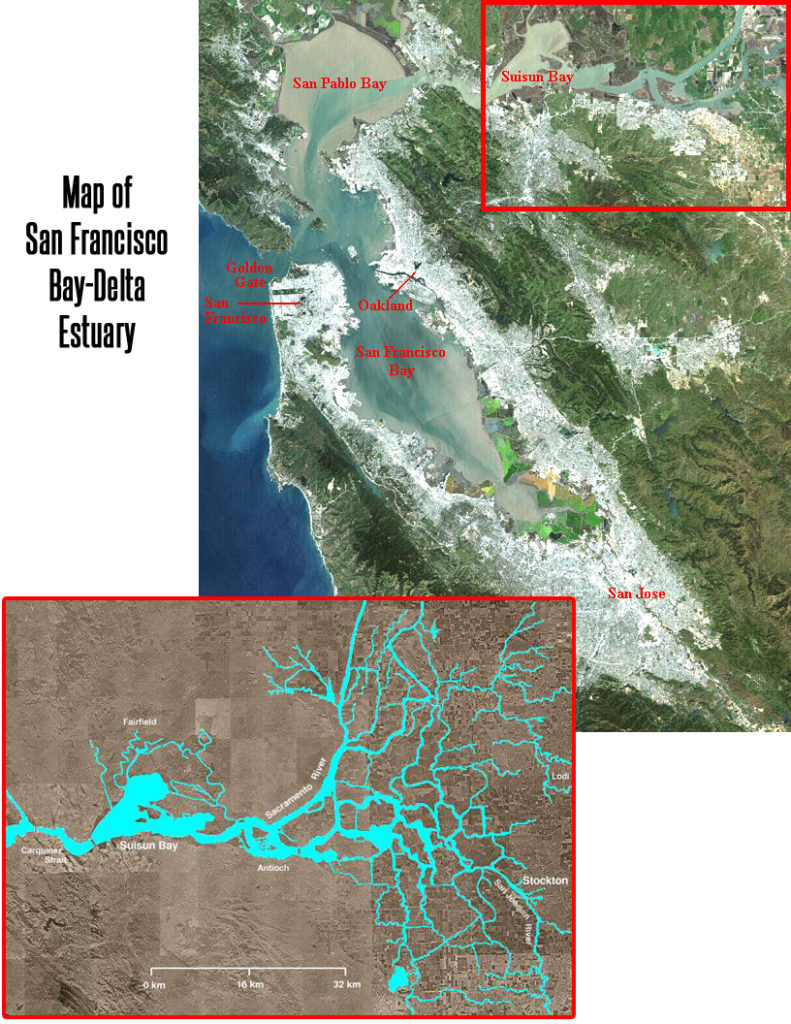Summary
Organization name
Restore the Delta
Tax id (EIN)
27-4179166
Categories
Environment , Community
Address
42 N. Sutter St., Suite 506Stockton, CA 95202
California’s two largest rivers – the north-flowing San Joaquin and the south-flowing Sacramento – come together in an inverted delta in the Central Valley east of San Francisco. Fresh water from these rivers and their tributaries mixes with salt water in an estuary that connects to the San Francisco Bay, eventually flowing out to the Pacific Ocean through the Golden Gate. This Bay-Delta region is the largest estuary on the Pacific Coast of the Americas, a crucial environment for Bay and Pacific Northwest fisheries.
“The San Francisco Bay-Delta Estuary is on the brink of environmental disaster. The fish, wildlife, drinking water, and the many other uses it provides are all declining due to massive water exports. Currently, the State allows more than half the water needed for the delta’s ecological health to be diverted away for unsustainable Big Agriculture on the west and south San Joaquin Valley.” – Restore the Delta

The Sacramento-San Joaquin Delta is a land of stunning open spaces fed by five major rivers. A maze of creeks and sloughs spreads finger-like through some of California’s most important habitat, especially for Chinook salmon and Greater Sandhill Cranes. It also contains over 500,000 acres of prime farmland devoted to diversified agriculture. The Delta is home to a $5.2 billion agricultural economy and to a fishing, boating, and recreation economy worth hundreds of millions of dollars annually. The Delta’s cultural diversity and rich historical legacy add vibrancy to regional tourism. Fisheries, agriculture, and people within the region and throughout the state are dependent on the Delta’s fresh water supply. Although other factors affect Delta water quality, water management policies that help to maintain flows of fresh water into and through the Delta are of great environmental and economic importance to all Californians.
Until the middle of the 19th century, runoff from the Sacramento and San Joaquin rivers frequently flooded open Delta wetlands. Beginning with reclamation for farming in the late 1800s, the Sacramento-San Joaquin Delta was divided into tracts (islands), as farmers began building levees that protected the larger islands from flooding. The levees that that were built over time gave the Delta its present shape, and transformed the region. This is why future habitat restoration efforts must carefully balanced protecting people and communities with creating space for species.
Today just under 1000 miles of Delta levees, the majority re-designed to modern engineering standards, protect agricultural and urban communities, natural habitat, and infrastructure worth billions of dollars to the state’s economy: power lines, highways, oil and gas pipelines, and deepwater shipping channels. Thus, revitalizing the Sacramento-San Joaquin Delta is essential to California’s overall environmental and economic health. Learn more about the Delta Tunnels.
Organization name
Restore the Delta
Tax id (EIN)
27-4179166
Categories
Environment , Community
Address
42 N. Sutter St., Suite 506